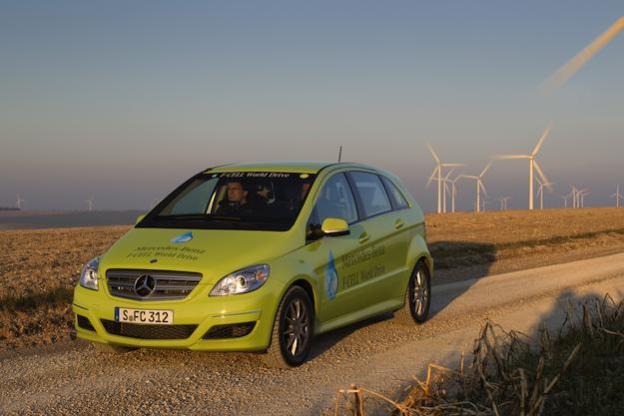
California seems to be pushing the green car agenda forward, whether the industry or the rest of the world is ready for it or not. According to the California Air Resources Board (CARB), the state will have around 70 hydrogen fueling stations.
California Fuel Cell Partnership (CaFCP) PDF document states that California will have 37 public hydrogen stations by 2015. An additional 68 hydrogen stations could service 10,000-30,000 commercial hydrogen fuel cell vehicles in 2016.
Intriguingly, the document goes on to make broader claims. By 2020, CaFCP estimates the state will have an infrastructure strong enough to “support one million zero-emissions vehicles “ and 1.5-million five years later.
CaFCP has also identified five “cluster communities” ideal for hydrogen expansion, including; Santa Monica; Torrance; Irvine and coastal Orange County; Berkeley; and San Francisco South Bay Area.
According to the estimates laid out in the document, the ideal goal would be to have five to seven percent of all gasoline stations in the clusters include a hydrogen pump. More than that would be considered oversaturation.
By 2017 53,000 hydrogen cars will be traveling the roadways of California, requiring some 100 fueling stations. It seems like a relatively low number of stations given the fleet size. Presumably, strategically placed pumps could help alleviate the range anxiety of early adopters.
As it stands, only one automaker, Hyundai, is ready with a production fuel-cell car, the ix35, and it’s only available in Europe. Mercedes, an early adopter of hydrogen, has pushed its f-cell model back to 2017 at the soonest. Other global brands are joining together to tackle the technology as a group. This poses the question: will there be enough hydrogen vehicles by 2017 to meet California’s expectations?
It’ll be interesting to see if the infrastructure can come together in time to meet these lofty goals set by California – ones far exceeding the rest of the country. Check back in for more details as the clock ticks along.
Editors' Recommendations
- Nissan teams up with EVgo to provide free charging of Leaf vehicles in U.S.
- Ferdinand Porsche was 100 years ahead of his time with his 1900 hybrid


